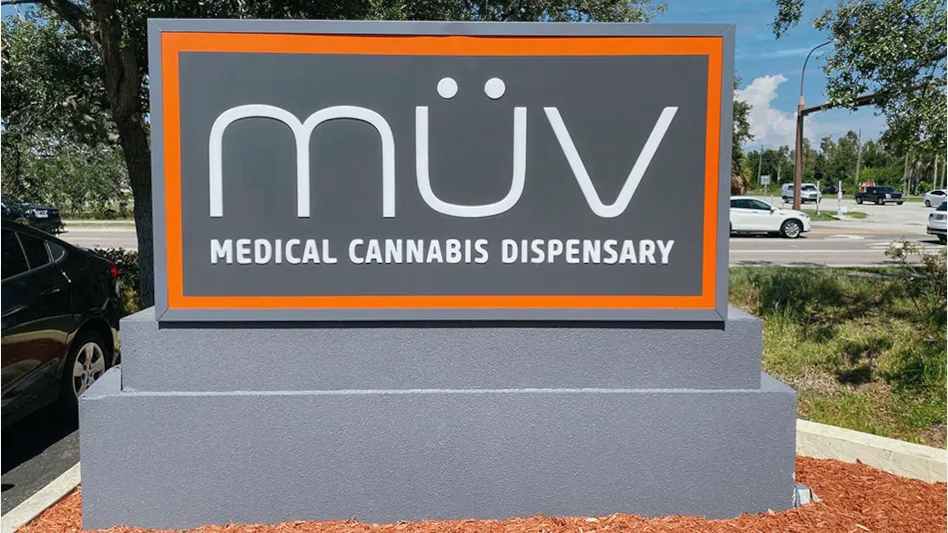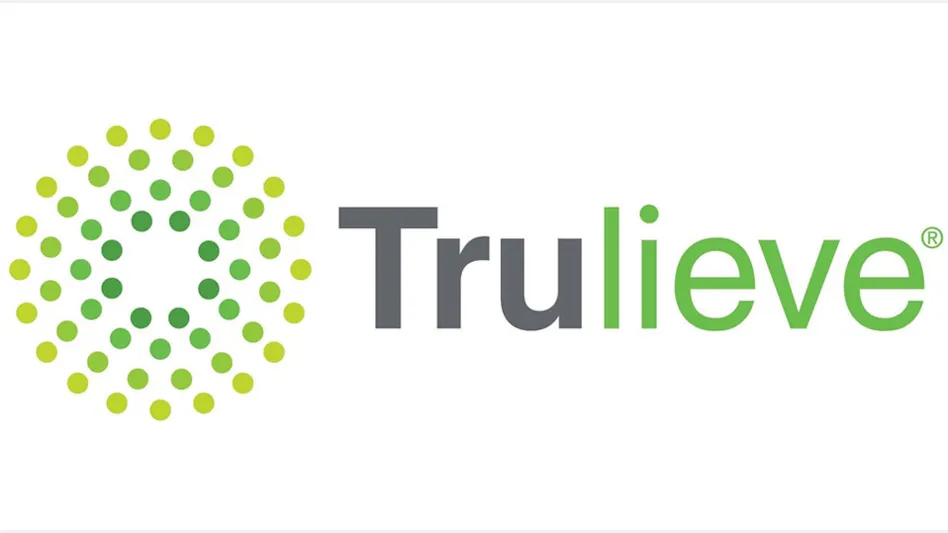
Courtesy of Ultra Health
Duke Rodriquez laid it out bluntly: New Mexico’s adult-use cannabis retail program underperformed in April, the first month for the new market.
Rodriguez, the president and CEO of Ultra Health, a vertically integrated operator with 38 dispensaries serving both patients and adult-use customers in the state, said the nearly $39.5 million in combined adult-use and medical sales recorded by licensed dispensaries were about 25% short of his expectations.

“I think we’re about $10 million light,” he said. “That’s the concern.”
Specifically, New Mexico retailers recorded more than $22.1 million in adult-use sales and $17.3 million in medical sales in April, according to the state’s Cannabis Control Division.
“The first signs are not all that impressive,” Rodriguez said. “Again, we should have done $20 million falling off a log with medical, and so, literally, we dropped off of medical and made a little bit more room for adult, but the aggregate was not that impressive.”
Rodriguez’s $50-million benchmark for April was two-fold.
First, New Mexico represents roughly twice the population of Montana, which launched its adult-use retail program Jan. 1, 2022, and ended up recording $25.4 million in combined adult-use and medical sales in April, according to the state’s department of revenue.
Therefore, New Mexico’s sales should have roughly doubled that figure, especially considering its geographic draw to customers from Texas—the second most populated state, where only medical cannabis with a 1% THC is legally accessible—according to Rodriguez.
Second, a trifecta of stars aligned in April for stellar retail conditions, including five Fridays and five Saturdays; the excitement surrounding the April 1 launch; and the natural sales surge associated with April 20, he said.
“We had the triple witching hour. It was the ideal month to have a nice, impressive, out-of-the-gate number,” Rodriguez said. “I look at [New Mexico] and say, yeah, it’s better than nothing. And it certainly is a launch, and it gets us off on a foot, but is it a good launch? Not so sure I can say it’s a good launch today.”
Rodriguez provides further details on the new market, Ultra Health’s expanded operations in the state, what industry stakeholders can expect for the remainder of 2022 and more in this Q&A.
Editor’s note: This interview has been edited for style, length and clarity.

Tony Lange: Looking back, what stood out most about Ultra Health’s preparations leading up to the April 1 launch of adult use?
Duke Rodriguez: In the areas we had direct control, such as building out new cultivation capacity or completing construction of new dispensaries, we were full steam ahead. In the 12 months preceding the start date of April 1, we doubled the number of store locations and increased our greenhouse capacity by more than 80%. Over 150 new employees were hired and trained. The Ultra Health system grew tremendously outside of waiting for the state of New Mexico to make a final determination on the number of plants to be allowed per licensee.
TL: New Mexico’s Cannabis Control Division adopted rules Aug. 24 for a 10,000-plant count limit for cultivators, then adopted an emergency rule Jan. 13 to increase that limit to 20,000 plants—You thought that decision needed to come sooner, correct?
DR: That’s correct. So, they’re doubling it [78] days before the launch date. There’s no way that’s going to impact April 1. And even if you double it, you know, when we had the 10,000-plant limit before it went to 20,000, understand only four producers stepped up to the full 10,000. So, you could raise it to 50,000, but if you don’t have able, willing providers who can step up in production, it provides very little value.
TL: So, you were one of the four producers then?
DR: We were actually two of the four, because we have two licenses on our campus, and so we were two of the four.
TL: How are your adult-use retail operations going now that we’re in May?
DR: With only a handful of days completed in May, we are seeing very little change from April other than not experiencing the April 1 launch date and the 4/20 surge. We expect total business to continue to grow, or the sales will in fact be rather disappointing when compared with the anticipated impact of legalization.
TL: What do you anticipate for the remainder of 2022?
DR: The year 2022 could see further deterioration on the medical side, as has been experienced by other states. The illicit market is likely to make an aggressive move to fill the void with lower priced—but untested and potentially unsafe—products. The risk of illicit product arriving in New Mexico from neighboring states like California or Oklahoma is a real consideration that could put a damper on New Mexico’s regulated sales in total. We are expecting a market with high volatility that could close 2022 at the lower end of the range of total cannabis sales of $425 million ($200 million medical and a partial year of nonmedical sales at $225 million).
Editor’s note: In more mature state markets, medical cannabis sales have declined while adult-use sales have increased. In Colorado, for example, medical sales represented roughly 18.1% of the licensed retail market in 2021, while Oregon’s medical cannabis sales represented 8.4% of its licensed retail market in 2021.
TL: What’s been the biggest challenge associated with the adult-use sales launch so far, and how has Ultra Health handled/overcome that challenge?
DR: The biggest challenge has been this overall experience with the regulator of building the plane while you’re flying it. Rules were being promulgated throughout the year leading up to the launch so it made it difficult to commit resources to protocols while knowing that the final regulations might look substantially different than earlier proposals. It was a rapid and ever-changing landscape for both legacy operators and newbies, so there was a lot of distrust between opposing interests. The best way to handle the high level of uncertainty was to accept the reality that whatever seemed true today would likely change tomorrow, so any commitments had to be made with an eye toward flexibility first.
TL: How has vertical integration helped Ultra Health adapt to the nascent adult-use market?
DR: Vertical integration remains the best path for success under the New Mexico framework. Being able to have more control over the supply side of the equation is a huge advantage. Being a retailer-only kind of operator that is wholly dependent on an unknown or not yet developed wholesale market is a recipe for likely failure. The wholesale price per pound has more than doubled in the last six months alone, from under $2,000 per pound to over $4,000 per pound. The regulated market is going to be hard-pressed to effectively compete with the illicit market.
TL: What kind of safeguards have been put in place to help ensure that the needs of medical cannabis patients continue to be met in New Mexico?
DR: Statutorily and regulatory there are not many guard rails or safety levers that can be triggered to fully protect the medical market. Internally, we are attempting to balance demand by the competing customer populations, but, honestly, the activities are blending together that there will be very little practical way to ultimately segregate them.
TL: With dispensaries in Sunland Park, Las Cruces, Hobbs and Clovis, what kind of customer traffic are you experiencing from out-of-state residents at those locations near the Texas border?
DR: Our projection model was built in anticipation that over 40% of New Mexico’s demand would be from out-of-state purchasers. We are seeing that reality play out particularly in southern and southeastern New Mexico. Our strongest sales are clearly in those communities within the 200-mile range of the Texas border. Keep in mind, Texas is the second most populous state in the U.S. with very little allowed regulated cannabis activities.
TL: How do your operations in Albuquerque and Santa Fe differ?
DR: Albuquerque is the most urban densely populated market in New Mexico but also has the greatest number of dispensaries. Total sales there are the highest in the state but not per capita. Due to the high number of stores in the Albuquerque metro, the market pie is very competitive and new market entrants are arriving every day.
It will take about a year before we see this market settle into place. There is likely to be a number of market casualties. One competitor described it as “carnage.” I am not sure it will be that bad, but it will be deep and painful for a number of hopeful new operators. Santa Fe is the most saturated market with the number of dispensaries, but the tourism season will be starting in early June, so we will get a better indication of that market in a few months.
TL: Has Ultra Health noticed any other consumer/market trends since April 1?
DR: Prices are on an upswing at both the wholesale and retail level. There is a clear indication of further price and supply pressures. It is possible that summer sales will be disappointing as compared to other states’ experience. We are not likely to get much relief on having better supply levels until fall 2022, and that will also depend on a successful outdoor growing season. We have not historically been an active outdoor grow market, so there are still a number of unknowns.
Latest from Cannabis Business Times
- Cresco Labs Reports $184M in Revenue in Q1 2024 Financial Results
- Michigan’s Adult-Use Cannabis Sales Up 21% From Last Year
- AYR Wellness Reports $118M in Revenue for Q1 2024 Results
- Total Wine & More Takes Another Step Into Hemp-Derived THC-Infused Beverage Market
- UK’S Medical Cannabis Boom: Patients, Demand and Consumption Surge to All-Time Highs - With a Record Number of Private Clinics
- ‘Mitey’ Pest Problems in Cannabis
- CryoMass Announces Sale of First Production Model to be deployed in Canada
- Ohio Medical Cannabis Operators Could Launch Adult-Use Sales in June





